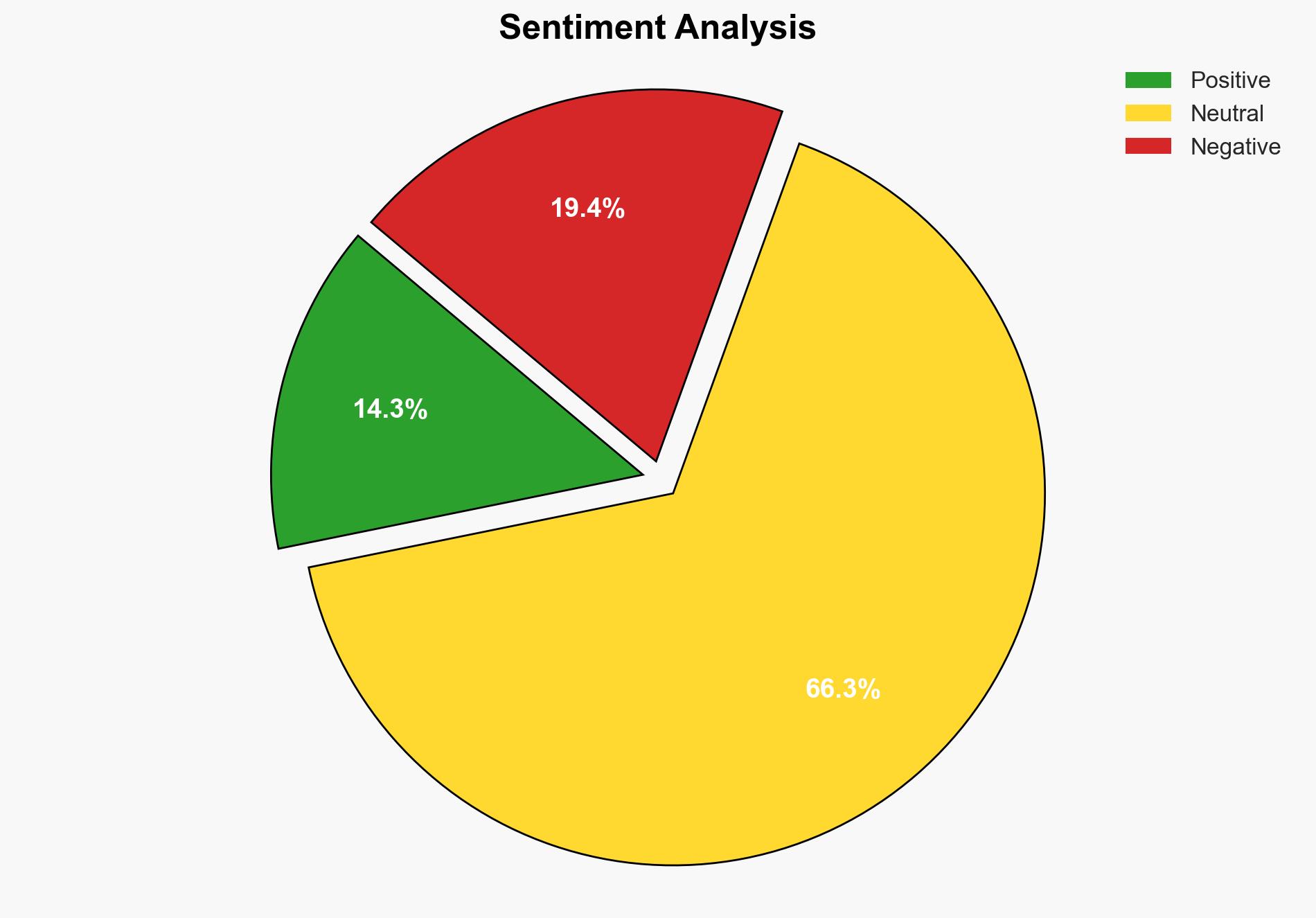UN releases US110 million to shore up life-saving assistance in neglected humanitarian crises – Globalsecurity.org
Published on: 2025-03-07
Intelligence Report: UN releases US110 million to shore up life-saving assistance in neglected humanitarian crises – Globalsecurity.org
1. BLUF (Bottom Line Up Front)
The United Nations has allocated US110 million from the Central Emergency Response Fund (CERF) to address underfunded humanitarian crises in Africa, Asia, and Latin America. This funding aims to support life-saving initiatives in regions affected by conflict, climate change, and economic instability. The strategic focus is on enhancing the humanitarian response in countries like Sudan, Afghanistan, and Venezuela, among others. Immediate action is required to address the funding gap of US41 billion needed to support vulnerable populations worldwide.
2. Detailed Analysis
The following structured analytic techniques have been applied for this analysis:
SWOT Analysis
Strengths: The CERF provides a rapid funding mechanism to address emergencies, ensuring timely assistance. The UN’s global reach facilitates coordinated efforts across multiple regions.
Weaknesses: Persistent funding shortages limit the scope of humanitarian interventions, potentially leaving critical needs unmet.
Opportunities: Increased collaboration with private sector donors could enhance resource availability. Leveraging climate action initiatives may improve resilience in affected communities.
Threats: Ongoing conflicts and climate shocks may exacerbate humanitarian needs, overwhelming current response capacities.
Cross-Impact Matrix
The allocation of CERF funds to Sudan and neighboring Chad is expected to stabilize the region by addressing displacement and hunger. However, insufficient funding in other areas like Yemen and Myanmar could lead to spillover effects, increasing regional instability.
Scenario Generation
Best-case scenario: Successful allocation and utilization of CERF funds lead to improved humanitarian conditions and reduced regional tensions.
Worst-case scenario: Continued funding shortages result in unmet needs, exacerbating crises and leading to further displacement and conflict.
Most likely scenario: Partial improvements in targeted regions, with ongoing challenges due to limited resources and complex geopolitical dynamics.
3. Implications and Strategic Risks
The strategic risks include potential escalation of conflicts in underfunded regions, which could destabilize neighboring countries and impact global security. Economic interests may be affected by disrupted supply chains and increased migration pressures. Climate-related shocks pose additional threats to regional stability and food security.
4. Recommendations and Outlook
Recommendations:
- Enhance partnerships with private sector donors to close the funding gap and ensure sustainable humanitarian interventions.
- Implement technological solutions to improve resource allocation and monitoring of humanitarian efforts.
- Advocate for increased international cooperation to address root causes of crises, such as climate change and economic instability.
Outlook:
Best-case: Enhanced funding and collaboration lead to significant improvements in humanitarian conditions and regional stability.
Worst-case: Persistent funding gaps and geopolitical tensions result in deteriorating conditions and increased global security risks.
Most likely: Gradual improvements in some regions, with ongoing challenges due to complex and evolving crises.
5. Key Individuals and Entities
The report highlights the involvement of Tom Fletcher and mentions Eri Kaneko and Jens Laerke as contacts. The United Nations and its Office for the Coordination of Humanitarian Affairs are central to the efforts described.




